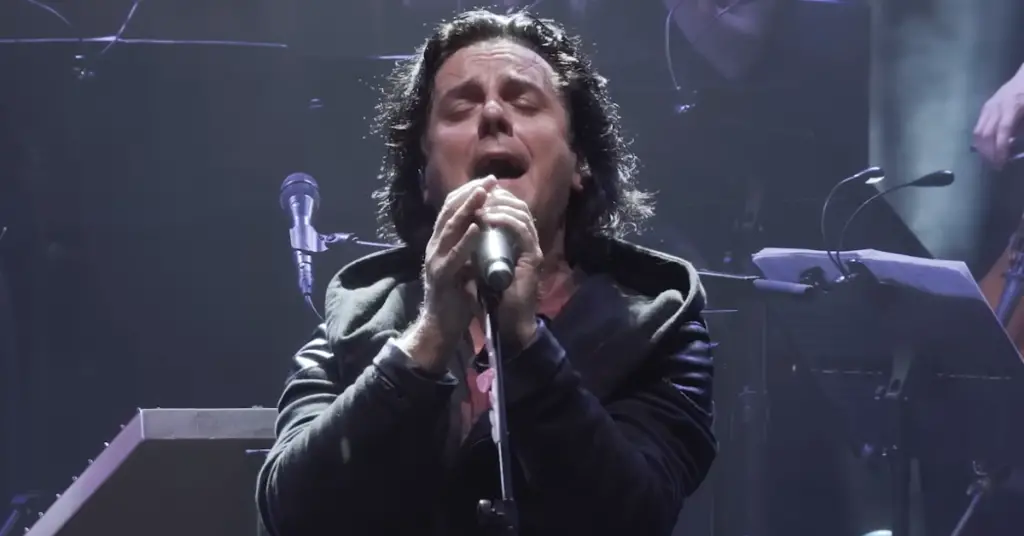Marillion – “Seasons End”: A New Era, A Timeless Message
When Marillion released “Seasons End” in 1989, it wasn’t just the title track of their fifth studio album — it was a signal flare, a bold statement: Marillion was evolving, but they hadn’t lost an ounce of their emotional depth, musical intricacy, or lyrical ambition.
It marked their first album with new vocalist Steve Hogarth, following the departure of the charismatic but polarizing Fish. Fans and critics wondered if the band could survive the change. With “Seasons End,” the answer was clear:
Not only could they survive — they could soar.
The Sound: Lush, Layered, and Cinematic
“Seasons End” is a slow-building, atmospheric epic that showcases Marillion’s signature blend of progressive rock sensibilities and emotional resonance.
From the opening ambient textures and Steve Rothery’s shimmering guitar lines, the song unfolds with a sense of patience and purpose. Mark Kelly’s keyboards layer in mood and movement, while the rhythm section — Pete Trewavas on bass and Ian Mosley on drums — grounds the track with steady elegance.
As the song builds, it swells into a symphonic rock climax, complete with soaring solos and vocal crescendos. Every section is carefully crafted — nothing rushed, nothing wasted.
The Lyrics: Environmental Despair and Human Reflection
At its core, “Seasons End” is a meditation on ecological loss and the fading of natural beauty — but it’s more than just a protest song. It’s poetic, mournful, and deeply human.
“Getting close to season’s end / I heard somebody say…”
The lyrics speak to climate change, disappearing wildlife, and the creeping consequences of human indifference. Yet instead of preaching, the song laments. It wonders. It reflects.
“No one left to watch the weather change…”
There’s a sense of helplessness, yes — but also of quiet awe and reverence, as if mourning not only the Earth’s decline but the loss of our connection to it.
The imagery is rich: frost in summer, birds that no longer sing, fields turned to deserts. The seasons don’t just refer to the environment — they symbolize the end of innocence, of time, of an era.
Steve Hogarth: A New Voice with Timeless Emotion
For fans unsure about how Steve Hogarth would fill Fish’s shoes, “Seasons End” provided instant reassurance. Hogarth’s voice is soaring, emotive, and nuanced — more melodic than Fish, perhaps, but just as expressive.
His performance on this track is understated and soulful, building in intensity as the music rises behind him. He doesn’t dominate — he inhabits the song, giving voice to the pain and wonder it evokes.
His arrival also marked a lyrical shift — from Fish’s theatrical, often cryptic wordplay to more direct, human emotion, while retaining poetic elegance.
The Legacy: More Than a Comeback
“Seasons End” helped solidify Marillion’s second life — not as a band chasing past glories, but as a reinvented force with new stories to tell. The album as a whole was a commercial and artistic success, but this track in particular stood out as a statement of maturity and relevance.
Live, “Seasons End” has become a fan favorite and a setlist mainstay, often accompanied by stunning visuals of Earth’s beauty — and fragility. Each performance serves as both a musical highlight and a subtle call to consciousness.

Final Thoughts
“Seasons End” is not just a song.
It’s a requiem, a renewal, and a revelation.
It whispers of the world we’ve inherited…
And wonders what we’ll leave behind.
With this track, Marillion proved they could weather a storm of change — and create something timeless, beautiful, and deeply moving in the process.


Facebook Comments